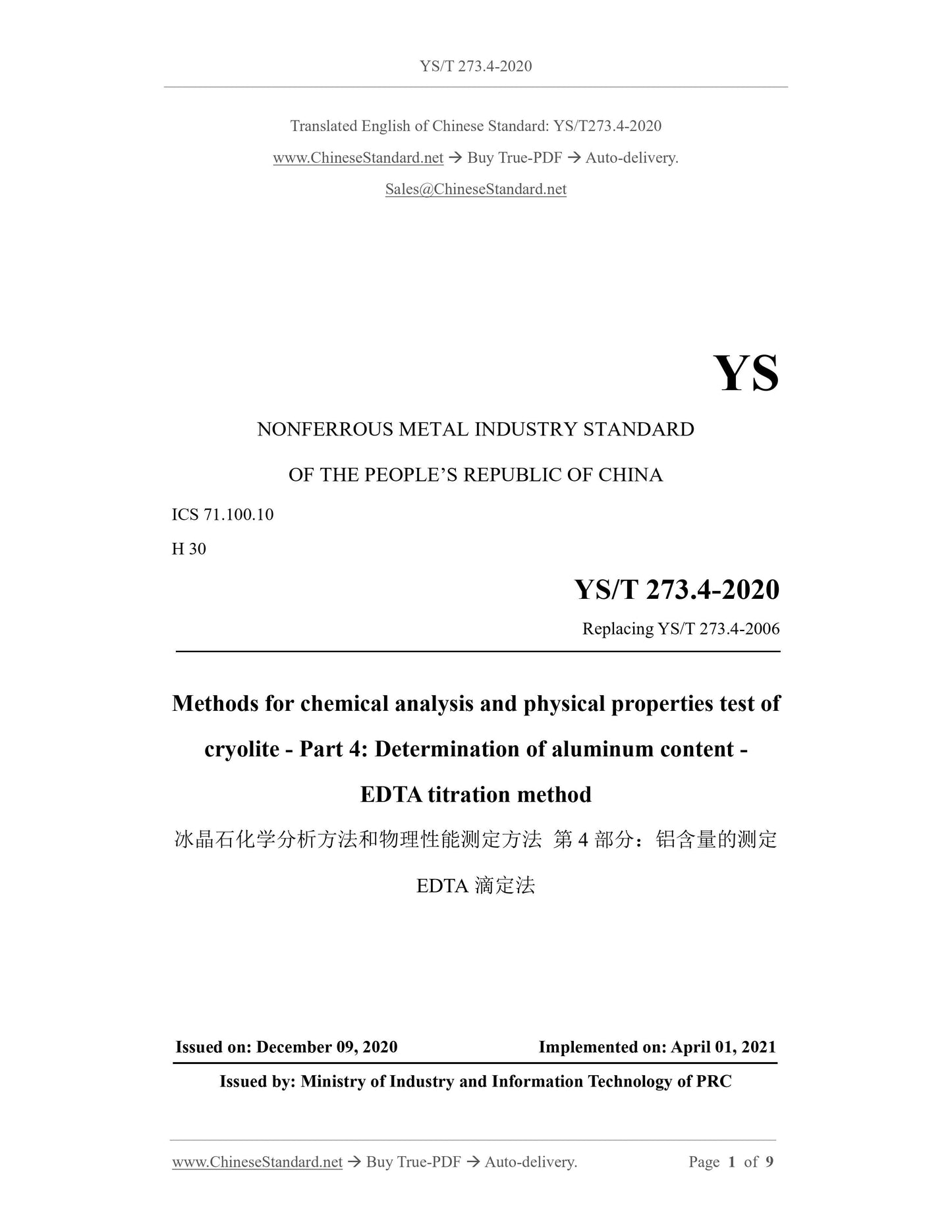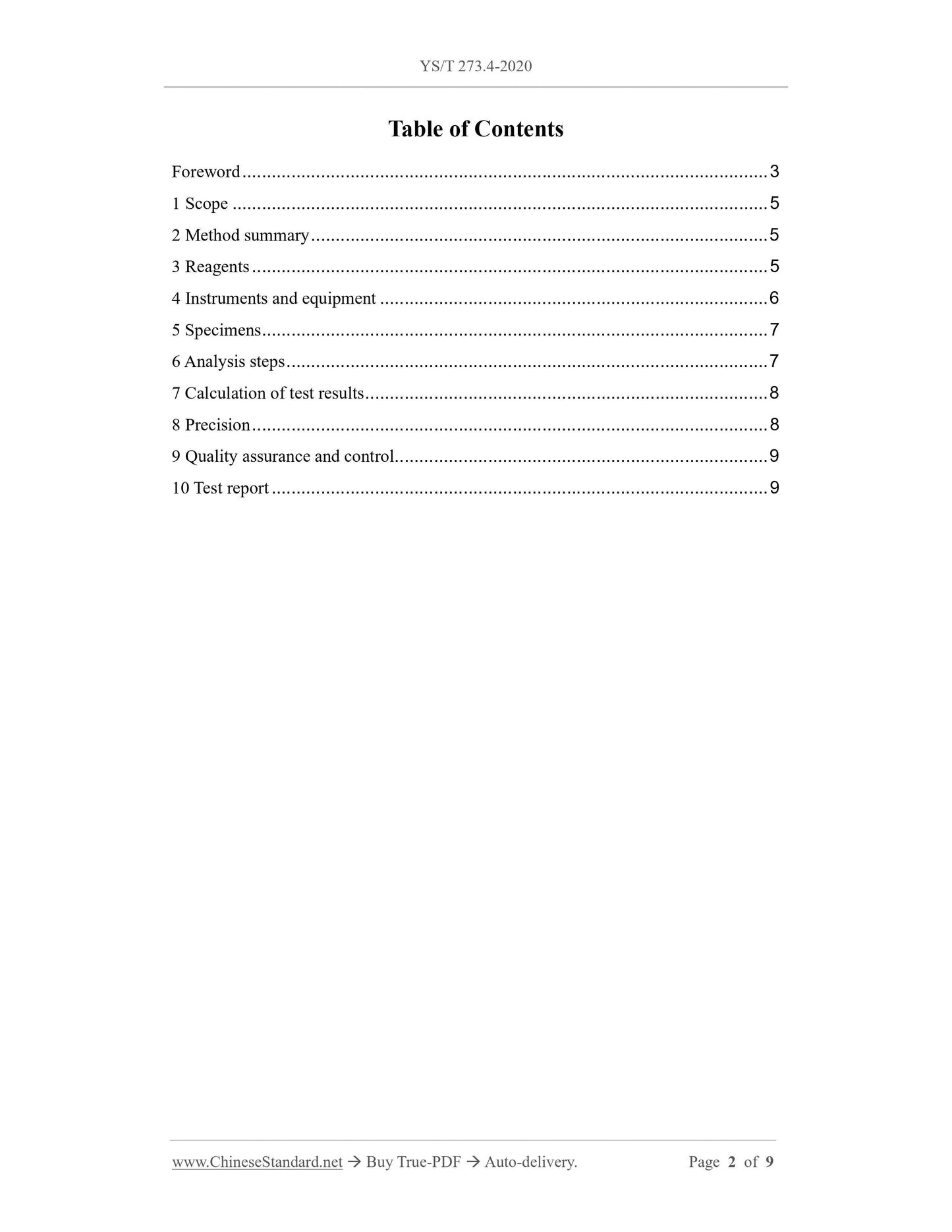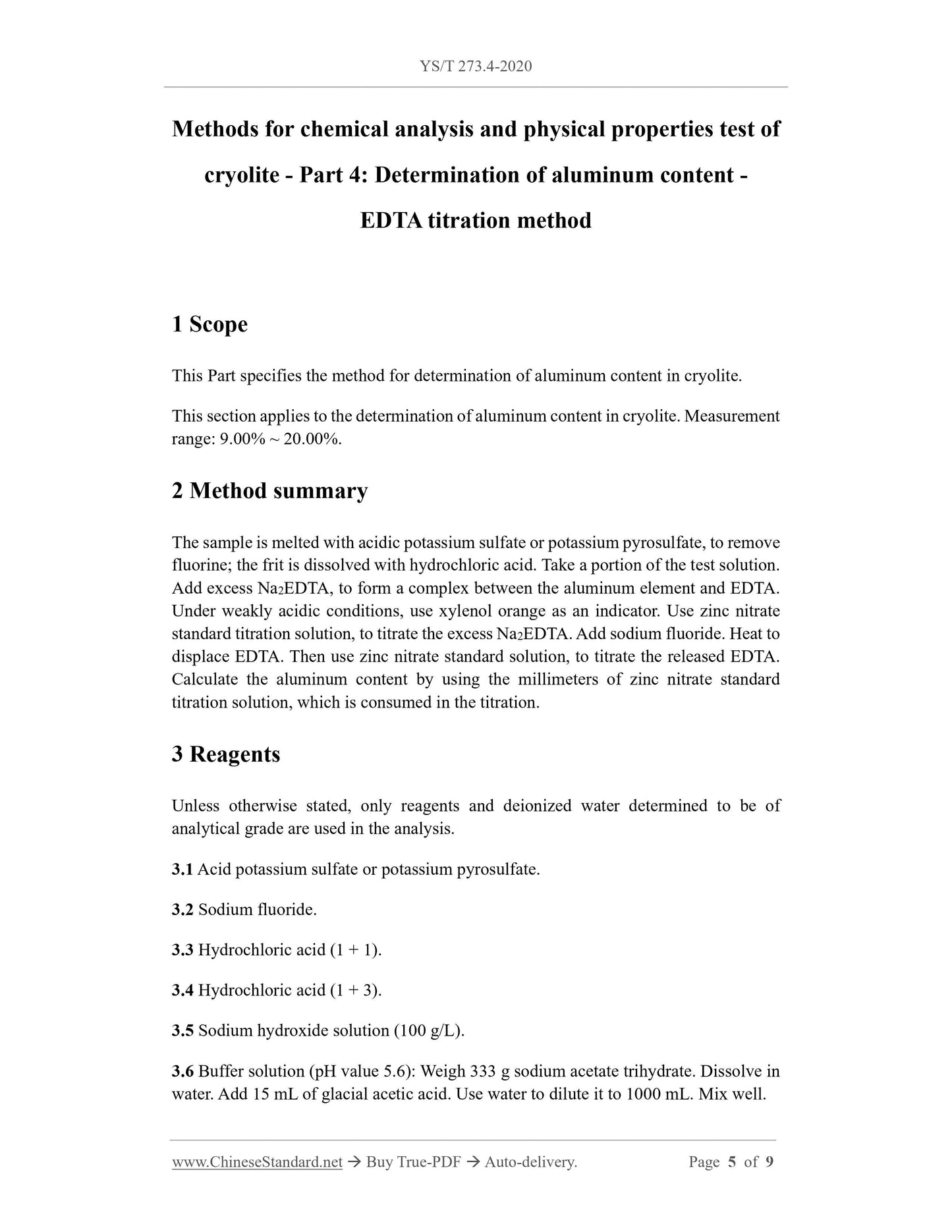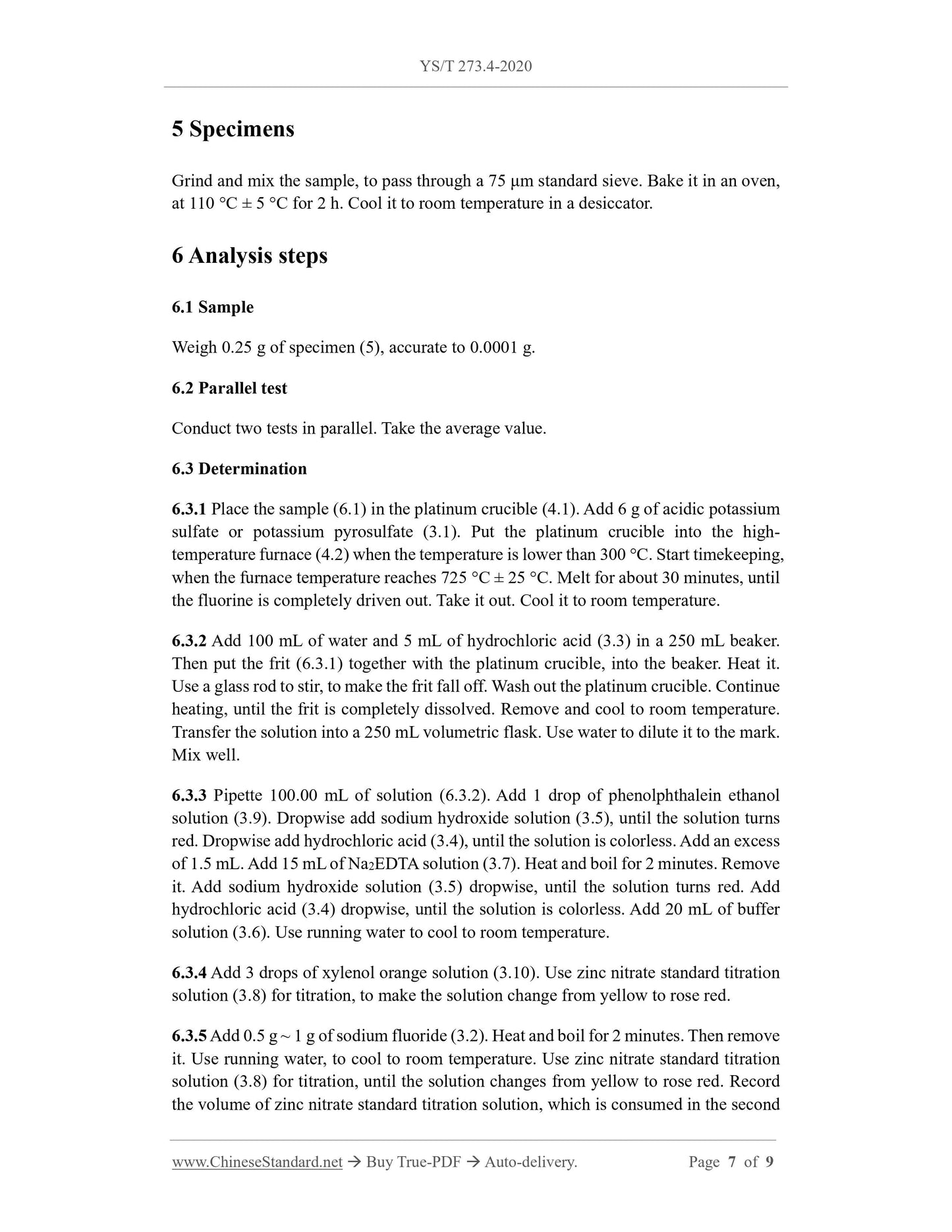1
/
of
4
www.ChineseStandard.us -- Field Test Asia Pte. Ltd.
YS/T 273.4-2020 English PDF (YS/T273.4-2020)
YS/T 273.4-2020 English PDF (YS/T273.4-2020)
Regular price
$95.00
Regular price
Sale price
$95.00
Unit price
/
per
Shipping calculated at checkout.
Couldn't load pickup availability
YS/T 273.4-2020: Methods for chemical analysis and physical properties test of cryolite - Part 4: Determination of aluminium content - EDTA titration method
Delivery: 9 seconds. Download (and Email) true-PDF + Invoice.Get Quotation: Click YS/T 273.4-2020 (Self-service in 1-minute)
Newer / historical versions: YS/T 273.4-2020
Preview True-PDF
Scope
This Part specifies the method for determination of aluminum content in cryolite.This section applies to the determination of aluminum content in cryolite. Measurement
range: 9.00% ~ 20.00%.
Basic Data
| Standard ID | YS/T 273.4-2020 (YS/T273.4-2020) |
| Description (Translated English) | Methods for chemical analysis and physical properties test of cryolite - Part 4: Determination of aluminium content - EDTA titration method |
| Sector / Industry | Nonferrous Metallurgy Industry Standard (Recommended) |
| Classification of Chinese Standard | H21 |
| Word Count Estimation | 7,789 |
| Date of Issue | 2020-12-09 |
| Date of Implementation | 2021-04-01 |
| Older Standard (superseded by this standard) | YS/T 273.4-2006 |
| Regulation (derived from) | Ministry of Industry and Information Technology Announcement No. 48 (2020) |
| Issuing agency(ies) | Ministry of Industry and Information Technology |
Share







